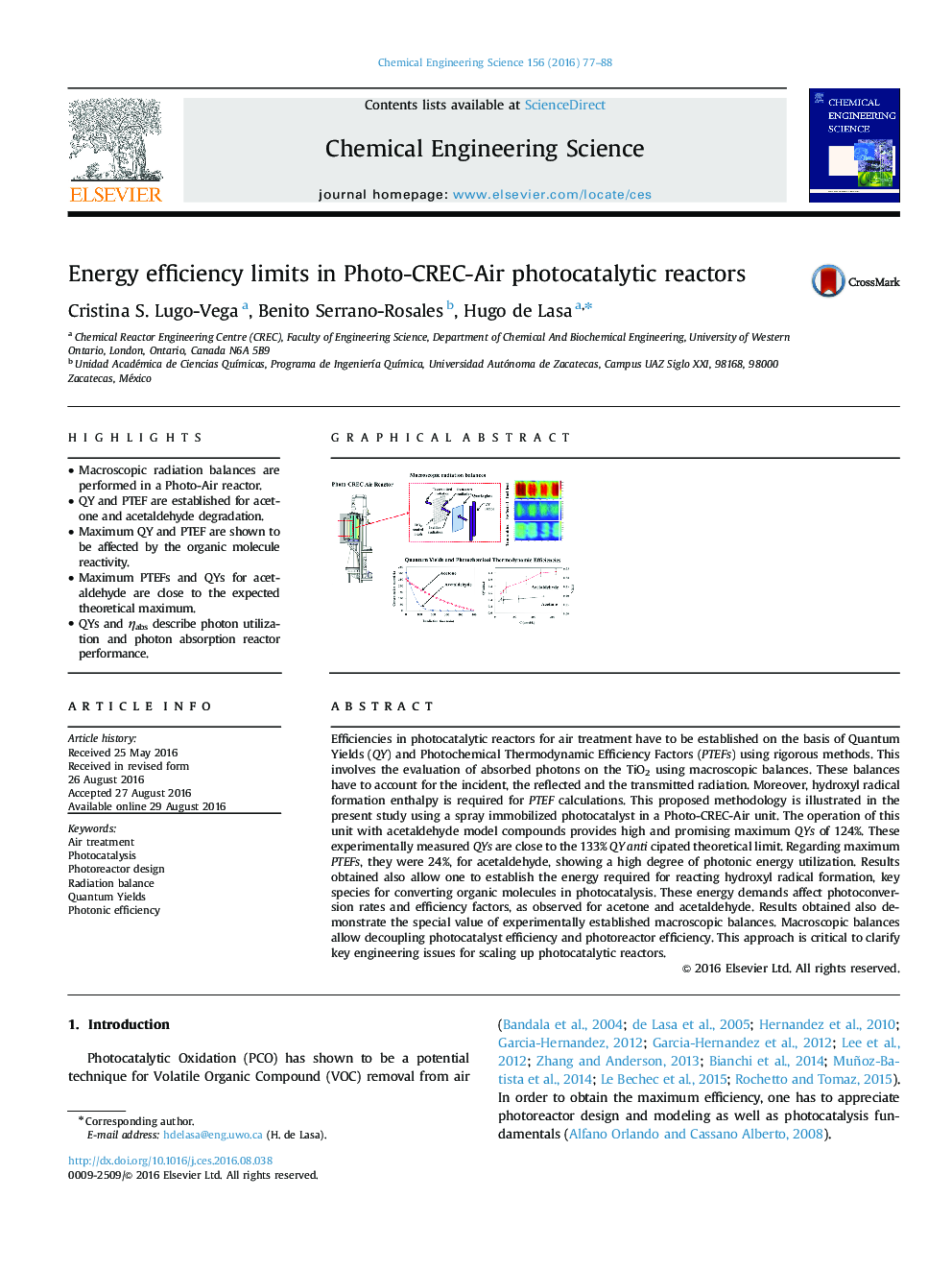| Article ID | Journal | Published Year | Pages | File Type |
|---|---|---|---|---|
| 6467809 | Chemical Engineering Science | 2016 | 12 Pages |
â¢Macroscopic radiation balances are performed in a Photo-Air reactor.â¢QY and PTEF are established for acetone and acetaldehyde degradation.â¢Maximum QY and PTEF are shown to be affected by the organic molecule reactivity.â¢Maximum PTEFs and QYs for acetaldehyde are close to the expected theoretical maximum.â¢QYs and ηabs describe photon utilization and photon absorption reactor performance.
Efficiencies in photocatalytic reactors for air treatment have to be established on the basis of Quantum Yields (QY) and Photochemical Thermodynamic Efficiency Factors (PTEFs) using rigorous methods. This involves the evaluation of absorbed photons on the TiO2 using macroscopic balances. These balances have to account for the incident, the reflected and the transmitted radiation. Moreover, hydroxyl radical formation enthalpy is required for PTEF calculations. This proposed methodology is illustrated in the present study using a spray immobilized photocatalyst in a Photo-CREC-Air unit. The operation of this unit with acetaldehyde model compounds provides high and promising maximum QYs of 124%. These experimentally measured QYs are close to the 133% QY anti cipated theoretical limit. Regarding maximum PTEFs, they were 24%, for acetaldehyde, showing a high degree of photonic energy utilization. Results obtained also allow one to establish the energy required for reacting hydroxyl radical formation, key species for converting organic molecules in photocatalysis. These energy demands affect photoconversion rates and efficiency factors, as observed for acetone and acetaldehyde. Results obtained also demonstrate the special value of experimentally established macroscopic balances. Macroscopic balances allow decoupling photocatalyst efficiency and photoreactor efficiency. This approach is critical to clarify key engineering issues for scaling up photocatalytic reactors.
Graphical abstractDownload high-res image (238KB)Download full-size image
